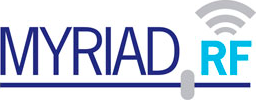I promised that I would provide the set-up procedure for operating your LimeSDR in a Windows 10 desktop under VirtualBox running a session of Ubuntu 15.1 (Wily). I’ll provide the VDI setup first since it’s the easiest way to get ‘on the air’ (in receive) with your LimeSDR - - a subsequent ‘build’ procedure will follow in a subsequent thread:
VDI Setup Method:
DISCLAIMER: You need to have a PC that is running Windows 10 with at least 2GB memory, 2.2 GHz processor speed (quad core is preferred) and has USB 3.0 resources already installed in the PC. You can try to use this with USB 2.0, but it may not perform as well - you’re on your own if you don’t have USB 3.0.
1.) Download the VirtualBox 5.0.22 application AND the VirtualBox Extension Pack from the following link:
https://www.virtualbox.org/wiki/Downloads
2.) Once you have both installation files, install the VirtualBox 5.0.22 application first then launch it once it’s completed its installation. At this point, install the Extension Pack and follow the prompts to install that package into VirtualBox 5.0.22.
3.) Now that you have VirtualBox installed with the Extension Pack added, close the VirtualBox app and download the VDI for the LimeSDR from the following link:
https://drive.google.com/folderview?id=0BwKr15rQ-sXiR2tXZkhuVE1DcnM&usp=sharing
For now, locate the file on your desktop - it’ll be moved to its permanent location later in this procedure. This will give you access to the VDI file so you can download it. It’s pretty big, 10+GB, but I can assure you that it will be an ‘Instant LimeSDR’ solution for you and you won’t have to download/compile/install anything to make your LimeSDR work with GQRX - - it can all be done with readily available resources.
4.) Once the VDI has been downloaded to your Win10 desktop, open your File Manager and cut/paste the VDI folder to the following subdirectory path:
C:\Users\your-user-name\VirtualBox VMs\
Once it’s located there, continue to step 5.
5.) Open the VirtualBox application and find the ‘Machine’ menu heading at the top of the application window bar. Click on that heading and then click on the ‘Add’ menu item. Once you click on that it will show the folder that you just pasted to that subdirectory (should read Ubuntu Linus LimeSDR). Double-click on that folder to add it to the ‘Machine’ menu.
6.) At this point, you will have the Ubuntu Linus LimeSDR machine as a part of the list of VirtualBox OSs you can run. Click to highlight this OS and then click on the green ‘Start’ arrow on the VirtualBox GUI. Allow the OS to load for a few moments.
7.) Once the OS is completely up and running in VirtualBox, it’s time to connect your LimeSDR to the USB 3.0. Do that at this time and allow Windows to recognize that it’s up and running.
7A.) DISCLAIMER: In Windows 10 it’s important to have the USB driver for your LimeSDR installed. The procedure assumes that you’ve already done this and have had your LimeSDR running with LM7Suite before. If not, please refer to the Lime Microsystems information for how to install your LimeSDR with the Cypress USB driver on Windows 7/10.
8.) In the VirtualBox GUI, click on the ‘Settings’ icon and then click on the ‘USB’ icon and confirm that ‘USB 3.0 (xHCI) Controller’ is checked in the radiobutton on that form. Click OK to dismiss the form. At the same time, hover over the USB symbol in the lower right hand corner of the VirtualBox window with your mouse and then left-click to see the USB device options. Click on the ‘LimeSDR’ USB device to allow it access to the VirtualBox interface for streaming. At the same time, you will hear the Windows interface lose control of it - this is normal and allow that to happen.
9.) With the LimeSDR connected, right-click on the Ubuntu window and select/click the ‘Open Terminal’ option to open a Terminal window. Type the following in the Terminal window at the prompt: SoapySDRUtil --find and then hit the Return/Enter key.
10.) In the Terminal window, you should see the following information (it may be slightly different with address, but all the other info must match):
Found device 0
addr = 241:1204
driver = lime
media = USB
module = STREAM
name = USB 3.0 (LimeSDR-USB)
If you have this readout, then you’re ready to launch GQRX…!
11.) At the Terminal window prompt, type the following: gqrx and then hit the Return/Enter key. Allow the app to load and when the Main GQRX application GUI comes up, then confirm at the very top of that GUI that the words are present:
Gqrx 2.5.2 - soapy=0,driver=lime
Ensure that is what’s printed at the top of the form - it should be. If not, then refer to Step 11A for more detail.
11A.) If you DO NOT have the ‘soapy=0…’ information at the top of the GQRX GUI, click on the little circuit board looking icon at the top of the GUI window and examine the Configure I/O devices GUI in the ‘Device String’ section of that GUI form. Type in the following:
soapy=0,driver=lime
This will set up the connection for the LimeSDR to stream to/from the GQRX application.
12.) Click on the Input Controls tab on the GQRX GUI and then click on the ‘Antenna’ button. Set it to the place where you have your antenna connected to the LimeSDR (if I recall right, mine is set to the ‘LNAL’ antenna position).
13.) On the GQRX GUI, click the 1/0 button at the far upper left part of the GUI and then watch the spectrum display and listen to the audio. You may have to readjust the tuning for your own FM station, but once you do get it set up you will be running your LimeSDR within it’s Ubuntu environment while in a Windows VirtualBox session…!!
14.) Congratulations…You have the most painless method of getting your LimeSDR working with Ubuntu while under Windows…Have fun!!
